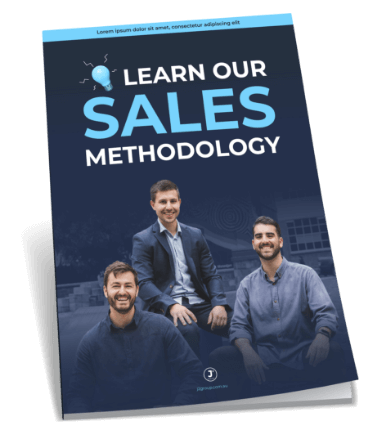Finding the right prospects is one of the most important elements of your sales strategy. Without a list of key prospects to target, your outreach lacks focus and you risk wasting your time on unqualified or outdated leads.
But building a prospect list from scratch can be pretty overwhelming. Scattered data, outdated contacts and unreliable tools make finding the right leads feel like searching for a needle in a haystack.
If you’re looking for a step-by-step B2B prospect list building framework you can follow to identify decision-makers and organise contacts into a pipeline-ready prospect database, read on.
Establishing Your Ideal Customer Profile (ICP)
Before you dive nose-first into B2B prospect list building, it’s important to first identify your ideal customer profile (ICP). Your ICP should be a clear blueprint of the companies or decision-makers most likely to benefit from your solution. Ask yourself: Who needs this most? Who can afford it? Who’s facing the challenges we solve?
Define Industry-Specific Parameters
To kickstart your sales prospecting strategy, narrow down the industries you’ll serve. Use free tools like LinkedIn filters to narrow your targeting even further and identify sub-industries. For example, if you sell HR software, focus on sectors like tech or healthcare with high employee turnover. The more niched down your prospect database, the better.
Consider Company Size and Revenue Thresholds
Another factor to consider when identifying your ICP and niching down your prospect database is the company size. What type of companies do you want to target? Small startups, mid-sized firms with growing budgets or enterprises requiring scalability? Pair this with revenue thresholds to filter prospects who can realistically afford your offering.
Data Sources and Collection Methods
Now that you know who you’ll be targeting, it’s time to ask yourself how will you find them. When it comes to B2B prospect list building, there are many data sources and collection methods you can use to source the right contacts.
Leverage Free vs. Paid Tools
Luckily for companies with smaller budgets, there are a few free sales prospecting tools they can use to create lead lists. For instance, LinkedIn allows you to find your ICPs through its search function. However, if you want to deepen your prospecting criteria, you’ll need to upgrade to LinkedIn Sales Navigator or use other sales prospecting tools like Apollo.io or Crunchbase.
Combine Multiple Data Sources
You don’t need to stick to just one sales prospecting platform. Combine LinkedIn profiles with company websites, industry reports and email verification tools like Hunter.io. For example, cross-reference a LinkedIn profile with Crunchbase funding data to confirm a prospect’s budget authority. This reduces errors in your prospect database.
List Validation and Enrichment Strategies
List validation is a key part of B2B prospect list building. You want to ensure your lead lists are accurate before you start messaging your prospects. This will help you avoid wasting your time on invalid emails, outdated roles or disconnected numbers and narrow down your chances of closing the sale.
Start with data cleaning. Remove duplicates, standardise contact formats and verify domains. Tools like Hunter.io or Apollo.io can help you validate contact details. Then, enrich your list by adding missing info like LinkedIn profiles, direct phone numbers or recent company updates. You can also cross-check Crunchbase for funding news or LinkedIn for job changes to ensure your info is accurate.
Segmentation for Targeted Outreach
Not all prospects are the same. Start by splitting your list into industry-based categories to tailor messaging to specific pain points based on the industry. Then, think about the different decision-makers you’ll be targeting and their priorities and customise your messaging to their needs.
For instance, C-suite executives typically focus on high-level ROI, so emphasise those benefits in your outreach messaging. On the other hand, department heads often focus on operational efficiency, team productivity and ease of implementation, so your outreach messages should highlight how your product or service helps them achieve these things.
Using this target account selection, you can avoid generic pitches and ensure your outreach resonates with what each decision-maker values most, increasing your chances of closing the sale.
Maintaining List Quality Over Time
B2B prospect list building doesn’t stop at the first draft. To keep your list high quality, set regular update protocols. Audit contacts quarterly to remove outdated roles, bounced emails or inactive companies. Use tools like CRM dashboards to track engagement metrics and flag stale leads.
Pair this with sales data enrichment. Refresh profiles with LinkedIn updates, company news or funding announcements. If a prospect moves to a new role, update their info and adjust your pitch.
This simple routine maintenance and real-time engagement tracking will ensure that your list stays accurate over time.
Build Your B2B Prospect List With Us
B2B prospect list building doesn’t have to be overwhelming–and you don’t have to do it alone. At J2 Group, we help Australian businesses build thorough lists of B2B prospects through highly personalised lead generation, LinkedIn prospecting and managed outreach. If you’re looking for a team of professionals to help you with lead generation, get in touch with us.




